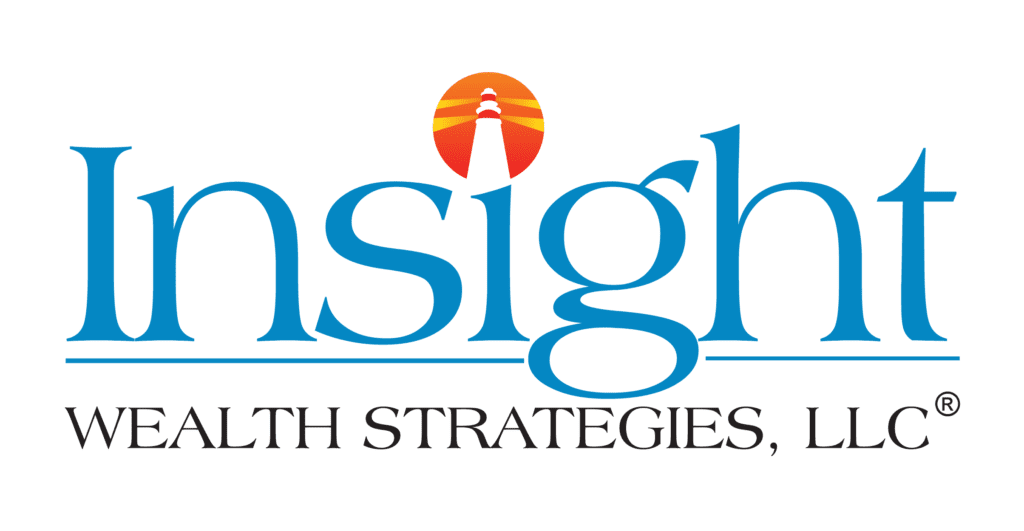Roth 401(k) vs. 401(k): What's the Difference?
When planning for retirement, choosing the right savings plan can significantly impact your financial future. Two popular options are the traditional 401(k) and the Roth 401(k). Both plans provide unique benefits and tax advantages, making them powerful tools for building a secure retirement nest egg. Understanding the key differences between these plans is crucial for making informed decisions about your long-term financial strategy.
Understanding the Basics
What is a Traditional 401(k)?
A traditional 401(k) is a retirement savings plan sponsored by an employer that allows employees to save and invest a portion of their paycheck before taxes are taken out. This pre-tax contribution reduces your taxable income for the year, offering an immediate tax benefit. The funds in a traditional 401(k) grow tax-deferred, meaning you won’t pay taxes on the investment gains until you withdraw the money during retirement.
One of the significant advantages of a traditional 401(k) is employer matching contributions. Many employers match a portion of the employee’s contributions, effectively providing free money to bolster your retirement savings. For instance, an employer might match 50% of your contributions up to a certain percentage of your salary. This match can significantly accelerate the growth of your retirement fund.
However, it’s important to note that withdrawals from a traditional 401(k) are subject to income tax at your current tax rate in retirement. Additionally, if you withdraw funds before reaching the age of 59½, you may face early withdrawal penalties along with the income tax.
What is a Roth 401(k)?
A Roth 401(k) is another type of employer-sponsored retirement savings plan, but it differs from the traditional 401(k) in how contributions and withdrawals are taxed. Contributions to a Roth account are made with after-tax dollars, meaning you pay taxes on the money before it goes into your retirement account. Because the contributions are made with money that has already been taxed, your withdrawals in retirement are tax-free, provided certain conditions are met.
The primary benefit of a Roth 401(k) is the potential for tax-free growth and tax-free withdrawals. Unlike the traditional 401(k), where you defer taxes until retirement, a Roth 401(k) allows your investments to grow without the burden of future taxes on the earnings. This can be particularly advantageous if you anticipate being in a higher tax bracket during retirement or if you expect tax rates to increase in the future.
Employer matching contributions in a Roth 401(k) are treated differently than employee contributions. While your contributions are made with after-tax dollars, any employer match is made with pre-tax dollars. As a result, the employer’s contributions and the earnings on those contributions are subject to taxes upon withdrawal, similar to a traditional 401(k). This means that the matching portion grows tax-deferred and will be taxed when you take distributions in retirement.
Overall, the Roth 401(k) offers a valuable way to manage your tax liability by paying taxes upfront and enjoying tax-free income during retirement.
Tax Treatment of Contributions and Withdrawals
Understanding the tax treatment of contributions and withdrawals is crucial when deciding between a traditional 401(k) and a Roth 401(k). Here’s a breakdown of the key differences:
- Pre-Tax Contributions (Traditional 401(k)):
- Tax Benefit Now: Contributions are made with pre-tax dollars, reducing your current taxable income.
- Example: If you earn $50,000 annually and contribute $5,000 to a traditional 401(k), your taxable income is reduced to $45,000.
- Tax Impact in Retirement: Withdrawals are taxed as ordinary income.
- Benefit: This can be advantageous if you expect to be in a lower tax bracket during retirement.
- Tax Benefit Now: Contributions are made with pre-tax dollars, reducing your current taxable income.
- After-Tax Contributions (Roth 401(k)):
- Tax Impact Now: Contributions are made with after-tax dollars, so there’s no reduction in current taxable income.
- Example: If you earn $50,000 annually and contribute $5,000 to a Roth 401(k), your taxable income remains $50,000.
- Tax Benefit in Retirement: Withdrawals, including investment gains, are tax-free.
- Benefit: This can be beneficial if you expect to be in a higher tax bracket during retirement or if you believe tax rates will increase.
- Tax Impact Now: Contributions are made with after-tax dollars, so there’s no reduction in current taxable income.
- Predictability of Tax Situation:
- Traditional 401(k): Taxes are deferred until retirement, creating uncertainty about future tax rates.
- Roth 401(k): Taxes are paid upfront, offering a predictable tax situation in retirement.
Required Minimum Distributions (RMDs)
RMD Rules for Traditional 401(k) Accounts
- RMD Requirements:
- Mandatory Withdrawals: Traditional 401(k) accounts are subject to Required Minimum Distributions (RMDs), which are mandatory withdrawals that must begin at age 73.
- Calculation: The amount of the RMD is calculated based on your account balance and life expectancy, as defined by Internal Revenue Services (IRS) tables.
- Tax Implications: RMDs from a traditional 401(k) are taxed as ordinary income. Failure to take the required distribution can result in significant penalties, including a hefty excise tax on the amount that should have been withdrawn.
RMD Rules for Roth 401(k) Accounts
- RMD Requirements:
- Mandatory Withdrawals: Unlike Roth IRAs, Roth 401(k) accounts are also subject to RMDs starting at age 73.
- Tax Implications: While RMDs are required, the withdrawals from a Roth 401(k) are generally tax-free, provided the account has been held for at least five years.
- Avoiding RMDs with a Roth IRA:
- Rollover Option: To avoid RMDs on a Roth 401(k), you can roll the funds into a Roth IRA. Roth IRAs are not subject to RMDs during the account holder’s lifetime, allowing the funds to continue growing tax-free.
- Timing and Process: The rollover should be done before the year you turn 73 to ensure you avoid the RMD requirement. It’s a straightforward process, but it’s advisable to consult with a financial advisor to ensure it’s done correctly and to understand any potential tax implications.
Income Limits and Contribution Limits
- Annual Contribution Limits:
- 2024 Limits: For both traditional 401(k) and Roth 401(k) accounts, the contribution limit for 2024 is $23,000 for individuals under the age of 501.
- Catch-Up Contributions: Individuals aged 50 and older can contribute an additional $7,500, bringing the total annual contribution limit to $30,5001.
- Employer Contributions:
- Total Contribution Limit: The combined total of employee and employer contributions cannot exceed $69,000 (or $76,500 for those 50 and older) in 20242.
Absence of Income Limits
- No Income Limits for Contributions:
- Traditional 401(k) and Roth 401(k): Unlike Roth IRAs, there are no income limits for contributing to either a traditional 401(k) or a Roth 401(k). This means that regardless of your income level, you are eligible to contribute to both types of 401(k) accounts up to the annual limit.
- Flexibility: This lack of income restrictions provides greater flexibility for high-income earners who may be ineligible to contribute directly to a Roth IRA due to income phase-out limits.
Should I Split My 401(k) Between Roth and Traditional?
Benefits of Diversification
Splitting your contributions between a traditional 401(k) and a Roth 401(k) can provide significant advantages through tax diversification. By contributing to both types of accounts, you can balance the immediate tax benefits of pre-tax contributions with the long-term tax advantages of tax-free withdrawals. This strategy can be particularly beneficial in an uncertain tax environment, as it hedges against future changes in tax rates.
Tax diversification means that some of your retirement savings will be taxed at the time of withdrawal (traditional 401(k)), while the rest will be tax-free (Roth 401(k)). This mix can offer greater flexibility in retirement, allowing you to manage your taxable income more effectively. For example, in years when you need to minimize taxable income, you can withdraw from your Roth 401(k) to avoid increasing your tax liability. Conversely, if your taxable income is lower than expected in a particular year, you can take distributions from your traditional 401(k) at a potentially lower tax rate.
This strategy not only provides tax optimization opportunities but also helps mitigate the risk of future tax law changes. By having both pre-tax and post-tax retirement funds, you can better adapt to various financial scenarios and policy shifts, ensuring a more resilient retirement plan. Overall, splitting your 401(k) contributions can offer a balanced approach, combining the strengths of both account types to enhance your financial security in retirement.
Factors to Consider
When deciding whether to split your 401(k) between Roth and traditional accounts, several personal factors should influence your decision:
- Current Tax Bracket:
- Impact on Contributions: Assess whether you are in a higher or lower tax bracket now. If you are in a higher tax bracket, contributing to a traditional 401(k) may lower your taxable income today.
- Consideration: Lowering current taxable income can reduce your tax liability now and potentially free up more funds for retirement savings.
- Expected Future Tax Bracket:
- Long-term Tax Strategy: Anticipate your tax bracket in retirement. If you expect to be in a higher tax bracket during retirement, contributing to a Roth 401(k) may be advantageous.
- Tax Diversification: Diversifying between Roth and traditional 401(k) accounts can provide flexibility to manage taxable income in retirement.
- Retirement Goals:
- Income Needs: Consider your projected income needs during retirement. Evaluate how tax-free withdrawals from a Roth 401(k) could support your financial goals.
- Legacy Planning: Assess whether leaving tax-free assets to heirs is important. Roth accounts, with their tax-free growth and withdrawals, can offer estate planning benefits due to their tax-free growth and withdrawals.
Importance of Consulting with a Financial Advisor:
Making decisions about retirement savings is complex and varies based on individual circumstances. Consulting with a financial advisor, like experts in Financial Planning Houston or
San Ramon Financial Planning, is crucial to:
- Customized Advice: Receive personalized guidance based on your financial situation and goals.
- Tax Planning: Optimize tax strategies and understand the long-term implications of your choices.
- Risk Management: Assess and mitigate risks associated with future tax changes and market fluctuations.
Conclusion
Choosing between a Roth 401(k) and a traditional 401(k) requires careful consideration of factors such as your current tax bracket, expected future tax situation, and retirement goals. A traditional 401(k) provides immediate tax benefits by reducing taxable income today, while a Roth 401(k) offers tax-free withdrawals in retirement, potentially shielding you from future tax increases.
By splitting contributions between Roth and traditional accounts, you can achieve tax diversification and flexibility in managing your retirement income. This approach allows you to adapt to changing financial circumstances and optimize your tax strategy over time.
Ultimately, consulting with a financial advisor is invaluable in navigating these decisions. A professional advisor can provide personalized guidance, tailored to your specific financial situation and goals, ensuring that you maximize the benefits of both Roth and traditional 401(k) accounts.
In conclusion, educating yourself about the nuances of Roth 401(k) and traditional 401(k)
accounts empowers you to make choices that support your long-term financial well-being. By
understanding these differences, you pave the way for a more secure and prosperous
retirement. For specialized assistance, consider consulting with Wealth Management Houston,
San Ramon Wealth Management, or Bay Area Financial Advisors to help you navigate your
financial journey.
Reviewed by,

Brian Stormont, CFP®
Brian Stormont is a comprehensive, fee-only financial advisor with Insight Wealth Strategies who began his career in the financial industry in 2000. His expertise encompasses retirement planning, investment planning, estate planning, and high-level strategies to help business owners and individuals minimize their income taxes.
Sources:
- https://www.irs.gov/newsroom/401k-limit-increases-to-23000-for-2024-ira-limit-rises-to-7000
- https://www.irs.gov/retirement-plans/one-participant-401k-plans
Insight Wealth Strategies, LLC is a Registered Investment Adviser. Advisory services are only offered to clients or prospective clients where Insight Wealth Strategies, LLC and its representatives are properly licensed or exempt from licensure. Past performance is no guarantee of future returns. Investing involves risk and possible loss of principal capital. No advice may be rendered by Insight Wealth Strategies, LLC unless a client service agreement is in place.
Insight Wealth Strategies, LLC (IWS) and its affiliates do not provide tax, legal or accounting advice. This material has been prepared for informational purposes only, and is not intended to provide, and should not be relied on for, tax, legal or accounting advice. You should consult your own tax, legal and accounting advisors before engaging in any transaction.
Certified Financial Planner Board of Standards Inc. owns the certification marks CFP®, CERTIFIED FINANCIAL PLANNER™, in the U.S., which it awards to individuals who successfully complete CFP Board’s initial and ongoing certification requirements

